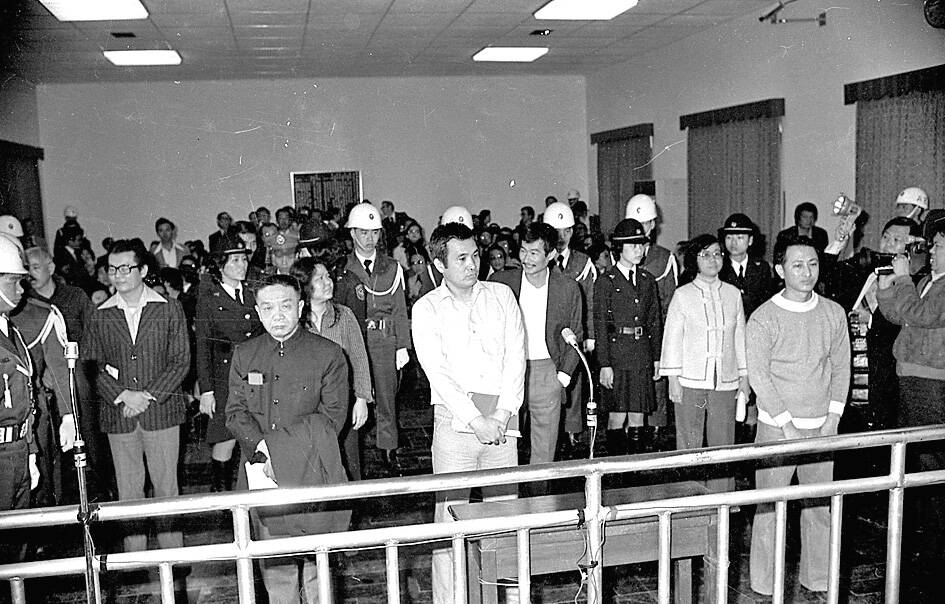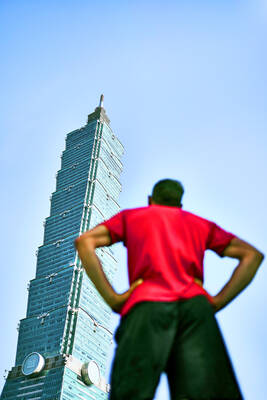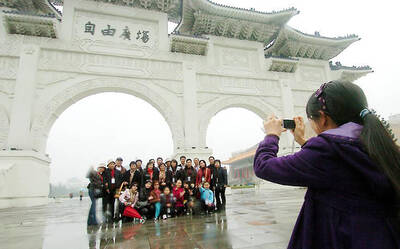Veteran democracy activist Shih Ming-te (施明德) fought his whole life for a better and democratic Taiwan, taking on not only the former authoritarian government, but even his own party to hold those in power accountable.
Yesterday, on his birthday, Shih passed away after a years-long battle with cancer. He was 83.
Born in Kaohsiung in 1941, Shih experienced authoritarian rule firsthand when his father was arrested during a crackdown on anti-government protesters during the 228 Massacre in 1947.

Photo: CNA
After being released, his father fell ill and never recovered. He died when Shih was 11.
The massacre refers to a crackdown launched by the then-Chinese Nationalist Party (KMT) regime against demonstrators following the shooting of protesters by security personnel on Feb. 28, 1947, in Taipei. The protesters had demanded the arrest of those responsible for the killing of a bystander the day before. Tens of thousands of people were imprisoned or killed in the ensuing crackdown.
As a child, Shih witnessed the killing of students who resisted the KMT army. At the age of 18, he applied to join a military academy with the goal of using armed rebellion to overthrow then-president Chiang Kai-shek’s (蔣介石) regime.
In 1962, while serving as an artillery officer in Kinmen County, he was implicated in a Taiwanese independence alliance case, arrested and sentenced to life in prison for inciting rebellion.
In prison, Shih was tortured and beaten. He was released in 1977 after Chiang’s death two years earlier, which prompted then-president Yen Chia-kan (嚴家淦) to order a reduction in prison sentences across the nation.
Immediately following his release, Shih became involved in the tangwai (黨外, “outside the party”) political movement, and in 1978, he served as its campaign team general director, advocating for judicial independence, as well as the lifting of martial law, and the ban on forming new political parties and news publications.
On Dec. 10, 1979, Shih was arrested along with other leaders in a pro-democracy demonstration that became known as the Kaohsiung Incident. He was sentenced to life imprisonment for the second time for his role in the demonstration.
At the military trial in 1980, Shih said that Taiwan faced four major obstacles hindering its path to democracy: the prohibition on forming new political parties, the ban on independent news publications, martial law and the absence of legislative elections.
He also said that Taiwan should be independent, and had been for more than 30 years under the name the Republic of China.
In 1983 and 1984, Shih went on hunger strikes in prison over the deaths of Taiwanese-American writer Henry Liu (江南) and Taiwanese academic Chen Wen-chen (陳文成), with some suspecting the deaths were linked to KMT security agencies.
During his hunger strikes, which he carried out off and on over a period of four years and seven months, Shih was frequently sent to the prison hospital and force-fed.
On July 15, 1987, Taiwan lifted martial law, which had been in place for 38 years. Then-president Chiang Ching-kuo (蔣經國) had planned to reduce Shih’s sentence, but Shih refused, insisting he was not guilty and demanding unconditional release.
He was eventually released in 1990 during president Lee Teng-hui’s (李登輝) tenure after Lee revoked the verdicts against those involved in the Kaohsiung Incident.
Shih served as a Democratic Progressive Party (DPP) lawmaker from 1993 to 2002, and as a one-term chairman of the party from December 1993 to March 1996.
He also advocated for universal direct elections through public voting, which was not achieved until 1996.
His stance as DPP chair in calling for a united government and pushing for cross-party reconciliation between the pro-independence DPP and pro-unification KMT, as well as the New Party, soon made him an enemy within his party.
In 2000, the election of president Chen Shui-bian (陳水扁) ended more than half a century of KMT rule. Shih considered leaving politics, but Chen persuaded him to stay.
Nevertheless, Shih began to drift away from the DPP. In 2006, he led a large-scale protest campaign against Chen, who was then embroiled in corruption charges.
Despite being an outcast in his party, he continued protesting Chen, who was eventually found guilty and sentenced to prison.
In 2015, Shih made his last political push by announcing he was running for president as an independent. He proposed a “Greater China Framework” to push for cross-strait peace between China and Taiwan. He withdrew his presidential bid after failing to collect the required 300,000 signatures within 45 days of announcing his candidacy.
Friends of Shih have said he spent his entire life searching for “pure truth,” which made him a “god of war-like figure” during the Martial Law era.
However, after martial law, he was unable to fulfill his political aspirations without the backing of his party.

US climber Alex Honnold is to attempt to scale Taipei 101 without a rope and harness in a live Netflix special on Jan. 24, the streaming platform announced on Wednesday. Accounting for the time difference, the two-hour broadcast of Honnold’s climb, called Skyscraper Live, is to air on Jan. 23 in the US, Netflix said in a statement. Honnold, 40, was the first person ever to free solo climb the 900m El Capitan rock formation in Yosemite National Park — a feat that was recorded and later made into the 2018 documentary film Free Solo. Netflix previewed Skyscraper Live in October, after videos

Starting on Jan. 1, YouBike riders must have insurance to use the service, and a six-month trial of NT$5 coupons under certain conditions would be implemented to balance bike shortages, a joint statement from transportation departments across Taipei, New Taipei City and Taoyuan announced yesterday. The rental bike system operator said that coupons would be offered to riders to rent bikes from full stations, for riders who take out an electric-assisted bike from a full station, and for riders who return a bike to an empty station. All riders with YouBike accounts are automatically eligible for the program, and each membership account

A classified Pentagon-produced, multiyear assessment — the Overmatch brief — highlighted unreported Chinese capabilities to destroy US military assets and identified US supply chain choke points, painting a disturbing picture of waning US military might, a New York Times editorial published on Monday said. US Secretary of Defense Pete Hegseth’s comments in November last year that “we lose every time” in Pentagon-conducted war games pitting the US against China further highlighted the uncertainty about the US’ capability to intervene in the event of a Chinese invasion of Taiwan. “It shows the Pentagon’s overreliance on expensive, vulnerable weapons as adversaries field cheap, technologically

NUMBERS IMBALANCE: More than 4 million Taiwanese have visited China this year, while only about half a million Chinese have visited here Beijing has yet to respond to Taiwan’s requests for negotiation over matters related to the recovery of cross-strait tourism, the Tourism Administration said yesterday. Taiwan’s tourism authority issued the statement after Chinese-language daily the China Times reported yesterday that the government’s policy of banning group tours to China does not stop Taiwanese from visiting the country. As of October, more than 4.2 million had traveled to China this year, exceeding last year. Beijing estimated the number of Taiwanese tourists in China could reach 4.5 million this year. By contrast, only 500,000 Chinese tourists are expected in Taiwan, the report said. The report